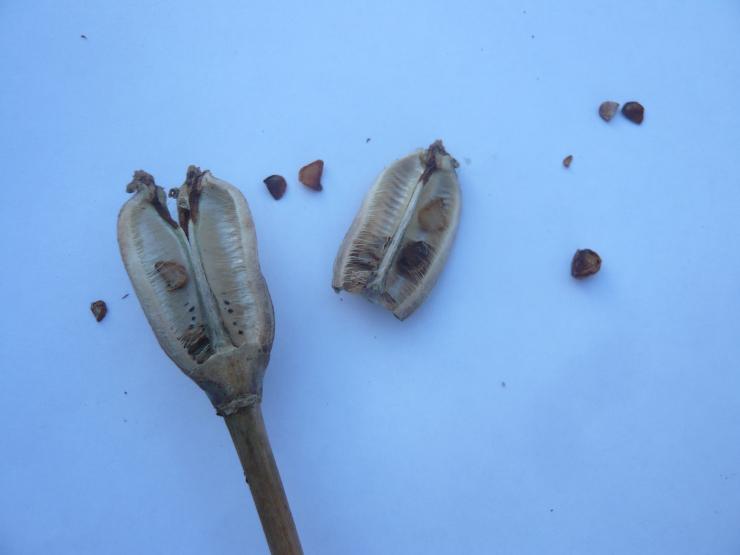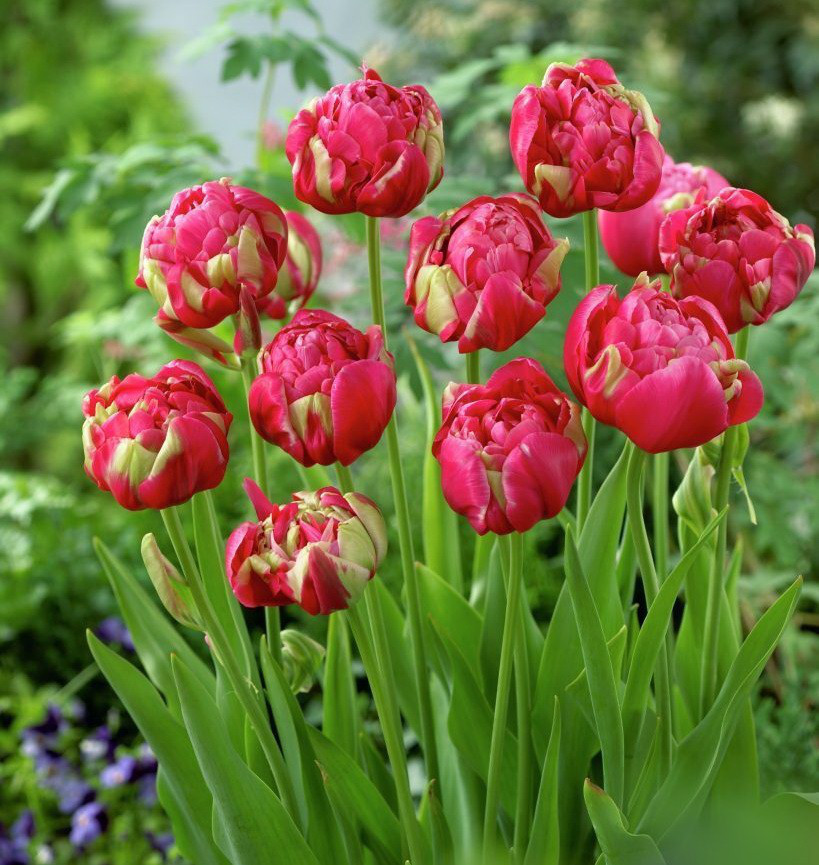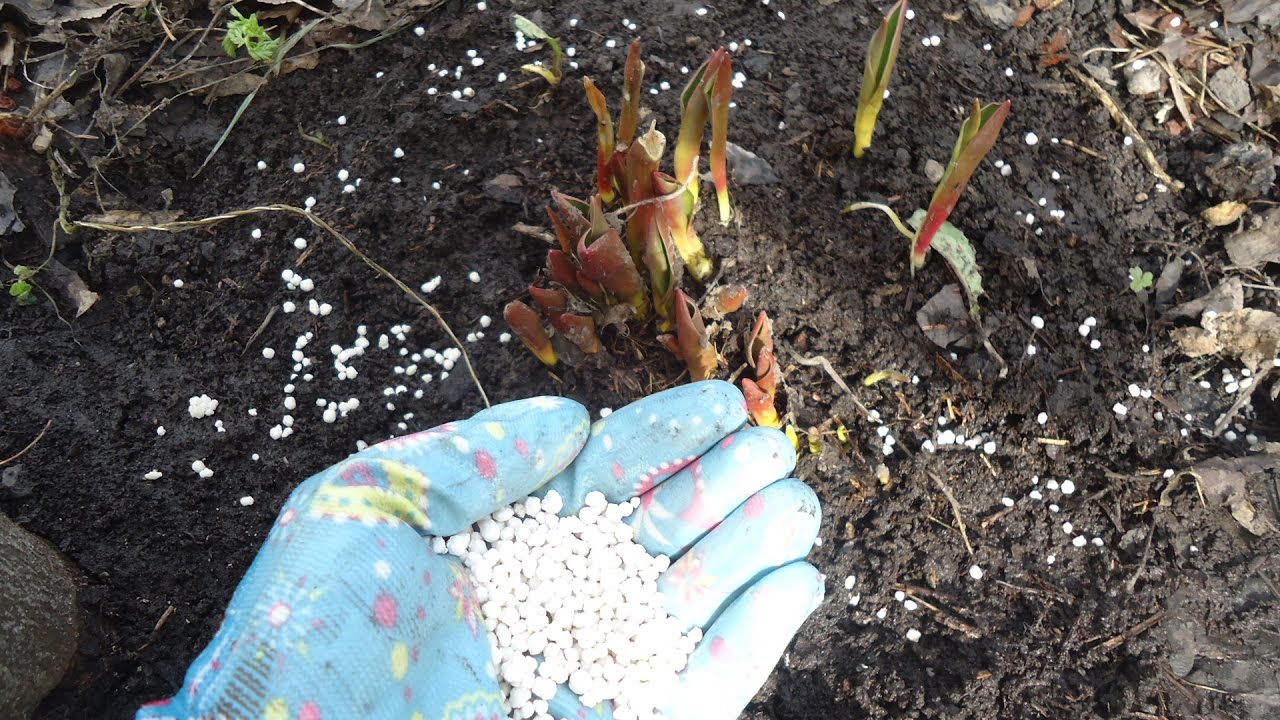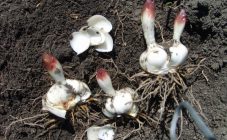Content:
The tulip is a bulbous plant native to the Tien Shan, mountainous northern Iran. Translated from Persian, the name means "turban", because it looks very much like it.
Characteristic
Refers to perennial plants of the Liliaceae family. At the moment, there are more than 80 species of them, settled all over the world: from south to north.
Tulip belongs to the group of perennial ephemeroids - plants that have adapted to the harsh living conditions in the steppes, deserts, mountainous regions with severe winters, dry summers and short springs with warm rains. It has a short growing season, which occurs during the most favorable period of the year. After flowering, the above-ground part of the plant completely dies, and the underground accumulates nutrients in order to revive again the next year. During the warm period until autumn, the old bulb dies off underground, the birth of a new, replacing one. In the sinuses of the replacing scales, smaller daughter bulbs are formed, and in the sinuses of the covering scales, very small baby bulbs grow. After digging them up, they are sorted by size, some of them will be used for growing the bulbs next year, and the large ones will already make a flower.
Planting tulips
Tulips are early flowers that delight the eye in spring, when other blooming flowers have not yet awakened from their sleep. When to plant tulips in different years depends on the climate in the region. This is usually done in the period from mid-September to early October, when the air temperature drops to + 6-10 degrees. But sometimes in the middle lane September is warm and sunny, in which case it is necessary to move the tulip planting dates a little, otherwise the planting material in the warm earth may germinate and die with the onset of cold weather.
It is also impossible to delay planting, the bulb in the ground must have time to take root. If there was not enough time to plant at the right time, you can do this at the end of October, but in this case it is necessary to mulch the garden well.
Digging up tulips
If a florist seeks to preserve and multiply tulips, it is important to follow the stages of agricultural technology:
- annual digging;
- breaking off the peduncle immediately after flowering.
There are several reasons for digging tulips after flowering:
- Deepening the tulip bulb into the ground after the stem has died. They must be dug out after flowering, otherwise it will be impossible for the plant to break through the soil next spring, the bulb will begin to rot, and the flower bed will look empty.
- The formation of the future flower arrow occurs at a temperature not lower than +25 degrees. And in the thickness of the earth this is not always possible, there the temperature is much lower. The deeper the bulb has gone, the less likely it is to bloom next year. This must be taken into account when growing flowers in the northern regions.
Annual digging will save the flower from shrinking in size. If both the replacement bulb and the children remain in the soil, they will interfere with each other's growth and take food from each other. As a result, the flower will degenerate. In addition, the bulbs in the ground will accumulate diseases from year to year.
The removal of the peduncles is carried out to preserve the nutrients inside the bulb and better form the future sprout. If it is not possible to replant flowers every year, it should be done at least once every 3 years.
Digging the bulbs should be done after flowering and partial yellowing of the leaves, otherwise, after the complete withering away of the aerial part, they may simply not be found. But first, you need to rake the ground a little near the trunk and see if there are brown scales on the bulb. If they are not yet there, the plant should not be touched, and if the onion is covered with a brown film on top, it is time to dig it up.
Excavation must be approached with caution. It is better to take a pitchfork for these purposes, since there is less opportunity to damage good bulbs than with a shovel. But in this case, there is a chance not to notice small children, they just slip between the teeth. It is also necessary to take into account the fact that different varieties bloom at different times, and so that there are no losses during harvesting, it is better to plant them in different places. Otherwise, if all tulips grow in one pile, waiting for the foliage to turn yellow on the later varieties, you can lose the place where the early ones grew or severely damage them when digging.
Storing tulips
Planting material is prepared for storage in this way:
- cleaned from the covering scales;
- examined for diseases;
- sorted by size.
The dried material must be stored properly. Usually the bulbs are placed in shoe boxes and left in attics or sheds until fall. If there is no room to store the material, the separated bulbs are placed in nets and hung on hooks to prevent mice and rats from damaging the planting material. They are kept for about a month at a temperature of + 22-25 degrees to form a sprout. Then they are placed in a cooler place and left so until autumn.
Growing tulips from seeds
Some expensive varietal tulips form one replacement bulb and 1 or 2 babies. To multiply your favorite variety for yourself or for sale in this way is a very long process. Amateur gardeners take a different path. The peduncle is not cut off, but the seeds in the box are allowed to ripen. Inside the box, there are seeds in the compartments. They are usually triangular in shape. At the beginning of August, a box with seeds is cut off and placed in a cool dry place for ripening. For sowing seeds, a separate place is chosen - a garden bed surrounded by boards. The soil is dug up, rotted manure, compost, peat are introduced to make it lighter. Sand is poured on top with a layer of 2-3 cm. After a few days, tulip seeds are planted. A layer of soil is again poured on top, everything remains so until spring.
In the spring, a small sprout appears above the surface of the earth, or rather a small narrow leaf, which, drying out, forms a tiny onion 2-3 mm in size under the ground. In the second year, the seed will give 2 sprouts and the bulb will increase in size up to 1 cm. It is not dug up, but covered with a layer of humus for the winter. In the third year, when the leaf looks like a real leaf, the bulb will give several children. They are dug up and planted in the fall, like ordinary planting material. It is possible to grow a bulb from seeds, but it will take from 3 to 7 years. High seed germination is observed if cultivation is done at home. In this case, onions are planted in the ground in the third year.
Preparing the soil for planting
Tulips should be planted in a well-lit area, even a slight shade will lead to stretching and bending of the stem, as well as reducing:
- the supply of nutrients to the bulb;
- flower sizes in the future.
Before planting tulips before winter, you need to dig up the soil 2 weeks before. If the soil is heavy and "poor", you should first prepare it for replanting. For 1 m² you will need:
- a bucket of compost or rotted manure;
- 100 g dolomite flour;
- 50 g superphosphate;
- 50 g of potassium sulfate;
You can replace superphosphate and potassium sulfate with potassium monophosphate (50 g), which contains both components that plants need in autumn - phosphorus and potassium. If the soil is clay, add a bucket of sand and a bucket of peat. Level everything with a rake and then dig up the earth.
Planting tulips with bulbs
The size of the bulbs determines the depth and location of planting. Small and medium-sized for the next year, as a rule, do not bloom. They are grown to large sizes in a sunny, but separate from the flower garden, place. If the fall is dry, the ground must be watered before planting.
There are several ways to plant tulips in open ground:
- A "planter" is used for planting, with the help of which the earth is dug up and the bulb is lowered to the bottom of the hole without indentation so as not to damage the bottom.
- Dig a trench for planting. Tulip growers often use this method so as not to lose an expensive and valuable variety. Dig a trench 25 cm deep, place the bulbs at a distance of 10 cm from each other and cover them with earth. The distance between the trenches is about 25 cm.
- Draw a circle or square on the ground (as you like) and remove the layer of earth inside the painted flower bed by the height of the bulb multiplied by 3. Place the bulbs on the bottom of the dug hole in any order. In the spring they get a blooming bouquet at this place.
- They are planted in containers. To prevent bulbous plants from scattering in different directions and sinking into the ground, they are planted in various containers, for example, in special plastic baskets. Dig a hole to fit the planting container. 2-3 cm of soil is poured at the bottom, the bulbs are laid and again covered with soil on top. The baskets have holes in the bottom and on the sides, do not prevent the plant from growing, but prevent the bulbs from being deeply buried and simplify the digging process: it is worth taking by the handles and removing the basket from the ground.
As containers, you can use not only special baskets, but also plastic containers for vegetables, cut plastic bottles with holes made on the sides and in the bottom, flower pots, if the variety needs to be preserved and not confused with others.
Tulips planted in containers also need to be dug up every year, because children prevent adult bulbs from blooming, taking food from them.
Features of planting tulips in different regions
Now planting according to the lunar calendar is in vogue, but before following the recommendations, it should be borne in mind that despite the fact that tulips are universally loved, the weather is significantly different in different regions. For growers who live in colder regions, the question arises: when to plant tulips in open ground? The farther south an amateur gardener lives, the longer the autumn planting can be postponed. General rules: plant tulip bulbs when the temperature at soil level should be around 8-10 degrees Celsius. In the Moscow region, the best time for planting: late September - mid-October. For Siberia and the Urals, time shifts to the end of summer - beginning of autumn. Growing in these harsh regions requires: selection of early varieties, planting in a sunny, sheltered from the winds, fertile soil.
Spring feeding and tulip diseases
It is possible to plant a tulip in spring, but in this case, flowering this year can not wait. The plant simply will not have time to take root. In the Moscow region, the sharp leaves of this flower appear from the ground at the end of April. The soil around the plants should be loosened and weeded if required.At this time, they need a full complex fertilizer with microelements (aquarine). Can be fed with ammonium nitrate or carbamide. The norm is a matchbox for a bucket of water. Further, after flowering, potassium monophosphate can be given, the plant no longer needs nitrogen at this time.
Among tulip diseases, the most famous are gray rot, fusarium, variegation.
Gray rot enters the soil with the planting material. It appears as gray and brown spots on the leaves. Most often it affects flowers that have been sitting in one place for many years. Plants are saved by treatment with 1% solution of copper sulfate or 1% solution of Bordeaux liquid. The landing pits are covered with ash. The plant can be returned to this place not earlier than after 5 years.
Fusarium appears at high humidity during storage of planting material. The bulbs start to rot, releasing ethylene into the air, which is why “blind” buds are formed in uninfected bulbs. It is impossible to cure the disease, but after harvesting or before planting, it is necessary to hold the bulbs in the maximal solution for 30 minutes.
Variegation is not treated, it is transferred by insects from diseased plants to healthy ones. All infected specimens must be destroyed.
In the spring, tulips are among the first to bloom in gardens and vegetable gardens. And if you follow the simple rules for care and planting for several years, you can collect a good collection of these wonderful flowers and admire the bloom on spring sunny days.


















